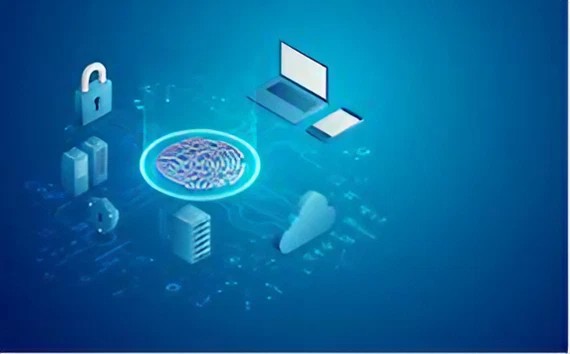10 Types of Cyber Attacks Commonly Used by Hackers

These days, most people use computers and the Internet, so technology is standard. Dependence on digital goods has resulted in an increase in malicious and illegal computer activities. Cyber attacks are defined as the deliberate use of computer systems and networks. It alters data, computer code, or logic using malicious code, which can lead to cybercrimes, including identity and information theft.
Ransomware was still the most dangerous, expensive, and common cyberthreat facing EMEA companies last year, and it is expected to continue to be the most destructive tool used in cybercrime by 2023. The Global Threat Report from CrowdStrike indicates that ransomware-related data exposures have increased annually by 82%, resulting in significant costs for the affected organizations.
Cyber Attack: What is it?
A cyber attack aims to harm or take advantage of a network by stealing, altering, or destroying data from a computer or any component of a computerized information system. Recently, there has been a rise in cyberattacks as the commercial sector has gotten increasingly digital.
How Can Cyber-Attacks Be Prevented?
Businesses in every industry require cybersecurity specialists. However, financial, healthcare, and even educational institutions are in high demand because to the necessity of protecting patient data, assets, and transactions—primarily to prevent cyberattacks. Enroll in the top cyber security courses to become an expert in the field.
- To protect your accounts, use difficult-to-understand alphanumeric passwords and change them regularly.
- When you receive emails from senders you don’t know, use caution. Verify that each email you receive is free of errors.
- Staff members should know the basics of cybersecurity. They need to understand the different types of cyber-attacks and how to avoid them. Enroll in cybersecurity courses to learn the basics of cybersecurity and help you and your staff prevent cyberattacks.
- The use of multi-factor or two-factor authentication is recommended.
- Keep a regular backup of your data.
- Since mobile devices are often the target of cyber attacks, take precautions to secure them.
Which Kinds of Cyber-Attacks Do Hackers Use?
Although there are different techniques for attackers to gain access to IT systems, most attacks follow a similar pattern. Below is a list of some of the most common types of cyber attacks:
1) SQL Injection Attack
The SQL injection problem extends to websites that use databases. This happens when a malicious entity takes advantage of the information sent by the client to the server to execute an SQL query on the database. SQL commands are entered into the data plane input, and it tries to execute predefined SQL instructions (for example, instead of login or password).
2) Denial-of-Service Attack
A denial of service attack occurs when a system experiences resource overload and is unable to process new requests for service. A denial of service (DDoS) attack also targets system resources. However, the attacker gains control of several additional host machines that are infected with the malware. Unlike attacks that aim to give the attacker more or better access, denial-of-service attacks do not immediately benefit the attacker.
3) Ransomware
Ransomware is currently the most common type of malware. It often installs itself when a user opens a hacked email attachment or visits a malicious website. The attacker then offers to provide the decryption key needed to unlock the encrypted data in exchange for a ransom.
4) Spoofing the DNS
For years, hackers have replaced IP addresses recorded on DNS servers with fake entries, exploiting DNS vulnerabilities to redirect users to websites they control instead of official websites. These fraudulent websites are designed to look exactly like the website customers were expecting to see, so they won’t raise red flags when they’re asked for login credentials. Consider a real website.
5) Insider Danger
As the term implies, insider threats are created by insiders rather than outsiders. In such a case, someone from within the organization can be fully informed. Insider threats have the potential to do a lot of damage. Small businesses are more vulnerable to insider threats because staff members have access to multiple accounts that contain private data.
6) Malware
Malware is software designed to damage or steal data from a computer, server, or network. Hackers fool you into downloading malware onto your devices.
One of the most popular types of cyberattacks is malware. Furthermore, bear the following factors in mind:
- Ransomware: This program encrypts your computer files, preventing you from accessing them unless you agree to pay a ransom.
- Viruses: Opening a software or file that has a virus attached causes the virus to become active.
- Trojans: Taking their name from the well-known Trojan horse, these types of viruses hide behind well-known software.
- Spyware: As the name suggests, this type of spyware monitors your activities and provides information to the hacker.
7) Phishing Cyber Attack
Phishing is a prevalent and widely used form of cyber attack. In order to send a fake email to the intended recipient, the attacker pretends to be a known contact. This means a specific type of social engineering attack. The victim opens the attachment, clicks on a malicious link, or opens the email without realizing what they are doing. Attackers can use this to obtain sensitive information and login passwords.
8) A Man-in-the-Middle Attack
Man-in-the-middle attacks, also known as eavesdropping attacks, are carried out when hackers insert themselves into two-party transactions. An attacker who places himself in the middle of a two-party transaction is carrying out this kind of attack. Cybercriminals can then intercept the transmission to steal and alter the data. This type of attack typically involves exploiting security holes in a network, such as unsecured public Wi-Fi, to insert itself into a visitor’s device and network path.
9) Zero-Day Attack
Zero-day attacks often occur when a network vulnerability is discovered and exploited without a patch. Attackers using zero-day tactics exploit newly identified vulnerabilities within a short period of time when neither security measures nor remediation are in place. To prevent zero-day attacks, they must be continuously detected, tracked and managed.
10) Password Attack
Cybercriminals use password attacks to try and guess, coerce, or fool you into revealing your credentials. Because passwords are the most commonly used authentication method for accessing secure information systems, cybercriminals find them an attractive target. By obtaining a user’s password, an attacker can gain access to sensitive or private data and systems, giving them the ability to modify and control said data and systems.
So, to properly protect your data, you’ll need a strong password generator, which is your best defense against potential hacks and attacks.
That’s it for the list of Types of Cyber Attacks.
ALSO READ:
- Plagiarism Checker Tools
- Social Media Keyword Research Tools
- Google Pixelbook i7
- Top Paraphrasing Tools
- Longest Flying Drones
- AI Twitter Tools
- AI Music Tools
Abstract
A cyber attack is an attempt to obtain unauthorized access to an IT system with the intent to steal, extort, cause disruption, or engage in other malevolent acts. Carelessness or insider malice often leads to security problems. Cyber attacks occur when an individual, group, or cooperative group intentionally attempts to breach the security systems of another individual or organization.
Hopefully, you now have a better idea of the different types of cyber-attacks that hackers use. You should be aware of them and take necessary precautions. A comprehensive curriculum that covers many of the cyber-attacks you need to be aware of to understand and protect against them is part of the cyber security course.

